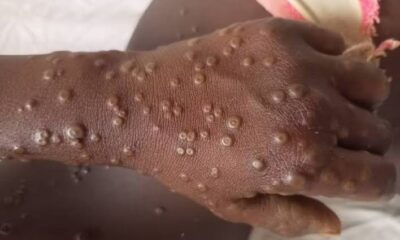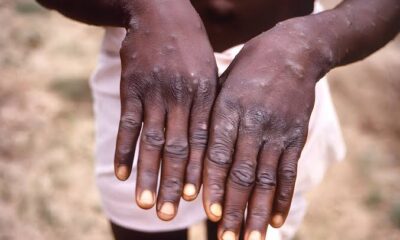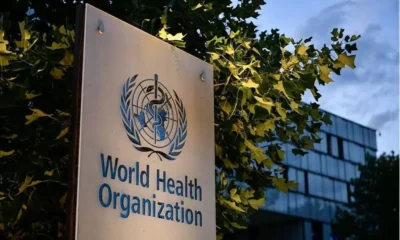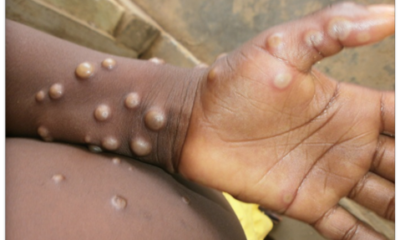Special Features
Monkeypox: What you need to know to stay safe
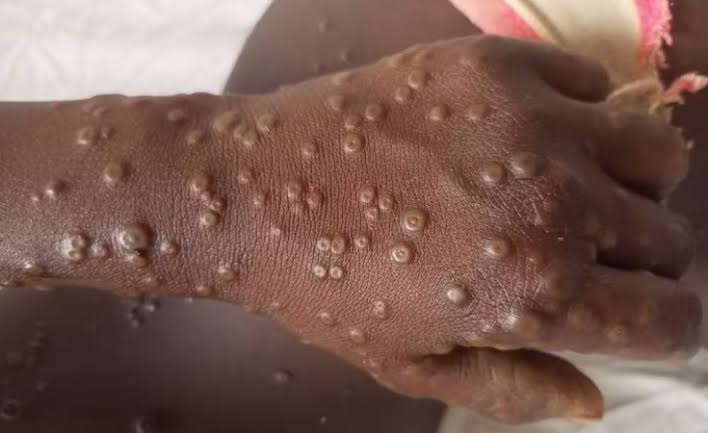
News360 Nigeria explores in this post, all you should know about the prevention of the Monkeypox virus.
Recently, global concerns have intensified regarding the Mpox virus, which the World Health Organization (WHO) declared a public health emergency on Wednesday.
This follows the African Centre for Disease Control’s similar declaration just two days prior.
On Friday, the Nigeria Centre for Disease Control and Prevention (NCDC) reported 39 confirmed cases of Mpox in Nigeria and issued a health advisory to curb further spread.
The NCDC has alerted public and private hospitals and provided a list of referral isolation and treatment centers across the country’s six geopolitical zones.
Since December 2022, the Democratic Republic of Congo has been grappling with a severe Mpox outbreak, reporting 524 deaths and over 14,000 cases in 2024. The WHO has expressed alarm over the disease’s incursion into Europe, with Sweden reporting the first case outside Africa.
The UN health agency has voiced grave concerns about the rise in cases and fatalities, particularly as new cases emerge in Burundi, Kenya, Rwanda, and Uganda.
What is Mpox?
Mpox, formerly known as Monkeypox, is a viral disease caused by the monkeypox virus.
It affects humans and animals and is related to the smallpox virus, though it usually causes milder symptoms such as fever, chills, and body aches. Severe cases may result in lesions on the face, hands, chest, and genitals.
Strains of the Mpox Virus
Mpox has two known strains:
Clade I: More severe, with a higher fatality rate of about 10%. This strain is responsible for the recent outbreak in the DRC and presents with more severe symptoms.
Clade II: Less deadly, causing the 2022 outbreak with a 99% survival rate.
Recent outbreaks have seen transmission through sexual contact in addition to physical contact.
The new cases in Burundi, Kenya, Rwanda, and Uganda are linked to the ongoing epidemic in the DRC. WHO Director-General Tedros Ghebreyesus has emphasized the need for a coordinated international response.
In the current outbreak, children under 15 represent over 70% of cases and 85% of deaths in Congo.
Mode of transmission and symptoms
Mpox is transmitted through close contact with infected individuals or animals.
Recent reports indicate that Clade I can also be sexually transmitted.
Symptoms include rashes, flu-like symptoms, and pus-filled lesions. While most cases are mild, the disease poses a greater risk to children, pregnant women, and individuals with weakened immune systems.
The new variant often features milder symptoms and genital lesions, making detection more challenging.
Nigeria has implemented measures such as a health declaration form for incoming passengers to prevent further spread.
Precautionary Measures
While the virus is less contagious than other viral infections like COVID-19, it can still pose serious health risks if not properly managed.
Here are some essential tips to help you prevent monkeypox and protect yourself and those around you.
1. Understand the transmission
Monkeypox spreads through close contact with an infected person or animal, or through exposure to contaminated materials.
The virus can enter the body through broken skin, the respiratory tract, or mucous membranes (eyes, nose, or mouth). Being aware of how it spreads is the first step in prevention.
2. Practice good hygiene
Good hygiene practices are key to preventing many infectious diseases, including monkeypox.
Regularly washing your hands with soap and water, especially after contact with potentially infected animals or people, is crucial. If soap and water are not available, using an alcohol-based hand sanitizer is a good alternative.
3. Avoid close contact with infected individuals
If you know someone who has been diagnosed with monkeypox, it’s essential to avoid close physical contact with them. This includes not sharing bedding, clothing, or towels, as these items can carry the virus. It’s also advisable to avoid physical contact with animals that might carry the virus, particularly those in regions where monkeypox is more common.
4. Wear protective clothing
In situations where you might come into contact with infected individuals or animals, wearing protective clothing such as gloves and masks can reduce the risk of transmission.
Healthcare workers and those caring for infected individuals should take extra precautions by wearing personal protective equipment (PPE) as recommended by health authorities.
5. Isolate infected individuals
If someone in your household is diagnosed with monkeypox, they should be isolated from others to prevent the spread of the virus.
The infected person should stay in a separate room, use a separate bathroom if possible, and avoid sharing household items. Regularly disinfecting commonly touched surfaces can also help reduce the risk of transmission.
6. Vaccination
In some cases, vaccination can be an effective preventive measure. The smallpox vaccine has been shown to provide some protection against monkeypox.
If you are in a high-risk area or profession, consult with a healthcare provider to see if vaccination is recommended for you.
7. Stay informed
Staying updated on the latest information from reliable sources like the World Health Organization (WHO) or the Centers for Disease Control and Prevention (CDC) can help you take appropriate measures if there is an outbreak in your area. Awareness is a powerful tool in preventing the spread of monkeypox.
8. Seek medical attention promptly
If you develop symptoms such as fever, rash, or swollen lymph nodes, especially if you have been in contact with a suspected or confirmed case of monkeypox, seek medical attention immediately. Early detection can lead to better outcomes and prevent further spread.


